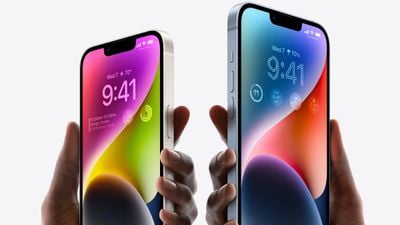Amid criticism from some customers regarding the removal of the SIM card tray on all iPhone 14 models sold in the United States, Apple today published a new support document outlining various "options and benefits" for using eSIMs while traveling abroad.

Apple says an eSIM is more secure than a physical SIM since it cannot be removed from an iPhone that is lost or stolen. Apple also says that eSIMs eliminate the need to obtain, carry, and swap physical SIM cards, or wait for them to arrive by mail.
The support document notes that the iPhone XS and newer can store eight or more eSIMs, while the iPhone 13 and newer can have two eSIMs active at the same time.
"This could, for example, include one eSIM for your home and another eSIM for the place you're visiting," the support document explains. "You can swap which of your stored eSIMs are active simply by changing your selections in Settings."
The support document includes information for customers looking to roam internationally with their existing carrier, purchase an eSIM from a local carrier while traveling abroad, or purchase a prepaid data eSIM from a worldwide service provider.
Apple says customers can activate an unlocked iPhone 14 model purchased in the United States with over 400 carriers that support eSIM on the iPhone in 100 markets around the world. Apple adds that many worldwide service providers also offer prepaid eSIM data plans for long-term use in countries around the world.
Some people have expressed concerns about eSIM availability while traveling abroad with eSIM-only iPhone 14 models from the United States.
In his iPhone 14 Pro camera review, travel photographer Austin Mann said he was "a bit concerned about the practicality of an eSIM-only approach for travelers with US iPhones who frequently visit the developing world," adding that he usually purchases a local SIM card in countries where he travels to so that it is easier and cheaper to communicate with people within the country. Mann said he would be thrilled to toss out his collection of physical SIM cards, but said he has been unable to figure out how to sign up for an eSIM line in East Africa, where he plans to travel to next summer.
The support document is unlikely to assuage disappointed customers, but it does serve as a helpful resource for using eSIM technology.























